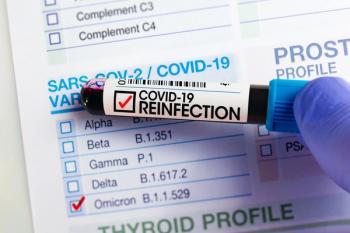
Study: Stem Cell Transplant Reverses Neuromyelitis Optica
Neuromyelitis optica is the fourth chronic disease that hematopoietic stem cell transplantation has appeared to reverse.
A stem cell transplant has reversed a debilitating neurological disease formerly classified as a rare subtype of multiple sclerosis (MS) known as neuromyelitis optica (NMO). Most of the patients maintained treatment success 5 years after the transplant and were able to avoid drug treatment that cost up to $500,000 annually, according to a new study from Northwestern Medicine and Mayo Clinic.
NMO, also known as Devic’s disease, is an autoimmune disorder in which the immune system and antibodies primarily attack the optic nerves and the spinal cord, but might also attack the brain.2 Approximately half of patients with NMO lose their sight and the ability to walk 5 years after diagnosis. Unlike MS and most other autoimmune diseases, NMO has a biological marker, AQP4, that correlates with disease activity.
After the stem cell transplant, patients no longer had discernable AQP4 in their blood. No other prior therapy has led to a complete removal of AQP4 or allowed patients to become treatment free, according to the authors.
Published in Neurology, the trial included 12 patients with NMO, who received the stem cell transplant. After 5 years, only 2 of the 12 relapsed and had to return to therapy.
This is the fourth chronic disease that hematopoietic stem cell transplantation (HSCT) has appeared to reverse, according to the study. In this transplant, stem cells are taken from the patient’s bone marrow or blood, and their immune stem is wiped out with chemotherapy. Next, their stem cells are reintroduced to the body where they migrate to the bone marrow, allowing their immune system to reset.
The study authors found in a previously-studied randomized clinical trial published in JAMA earlier this year, HSCT reversed neurologic disability. Over 5 years, it was found to have slowed, or in most patients, prevented further progressive disability or evidence of new disease activity in relapsing-remitting MS. Other diseases HSCT has reversed are systemic sclerosis and chronic inflammatory demyelinating polyneuropathy, according to the press release.
Reference
- Stem cell transplant reverses disabling MS-like disease [press release]. Northwestern website. Published October 07, 2019. https://news.northwestern.edu/stories/2019/10/stem-cell-transplant-reverses-disabling-ms-like-disease/. Accessed October 11, 2019.
- Neuromyelitis Optica (NMO). National MS Society website. https://www.nationalmssociety.org/What-is-MS/Related-Conditions/Neuromyelitis-Optica-(NMO). Accessed October 11, 2019.
Newsletter
Stay informed on drug updates, treatment guidelines, and pharmacy practice trends—subscribe to Pharmacy Times for weekly clinical insights.


















































































































































































































